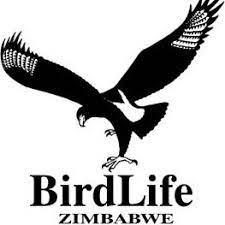IMPORTANT BIRD AREAS
Z007 Nyanga Lowlands/Honde Valley
FULLY PROTECTED
GLOBAL IBA (Al, A2, A3)
18°22’S; 32°53’E
c. 1 000 ha
SITE DESCRIPTION
This IBA extends from the 1 650 m a.s.l. contour of the montane forests on the slopes of Nyangani Mountain down to the lowland (below 1 000 m a.s.l.) rainforests in the Honde Valley. It is contiguous with the eastern boundary of the Nyanga Mountains (IBA Z006) and has been split from it on an ecological basis; it is warmer and more tropical with a different complement of vegetation and avifauna. The Holdenby Communal Land, part of Mutasa District, and two large tea estates bound the IBA in the east and south.
The rainforests on the south and eastern slopes of Nyangani form the largest continuous block of rainforest in Zimbabwe. The area immediately below Mtarazi Falls is one of the few examples of relatively pristine medium-altitude forest dominated by Aningeria adolfi-friedericii, the only area where this tree species is found in Zimbabwe. The medium-altitude forests, characterised by Chrysophyllum gorungosanum, Croton sylvaticus and low-altitude forest dominated by Newtonia buchananii, Maranthes goetzeniana and Xylopia aethiopica, extend along river courses into the two large commercial tea estates: Aberfoyle and Eastern Highlands. The forests merge into Brachystegia woodland on the lower slopes. The past range of the forests has been severely reduced through clearing of land for tea plantations, which dominate large portions of the landscape. The Communal Land is heavily settled and all of the forest is cleared except for two very small patches: Pungwe Bridge Forest and Rumbise Hill Forest. The latter forest holds Newtonia buchananii and Aidia micrantha.
BIRDS
The complement of Afrotropical Highlands (A07) biome-restricted assemblage species found here are similar to those of the Nyanga Mountains (IBA Z006). Interspersed among the forests are small patches of high-altitude (1 600 m a.s.l.) grassland, holding Blue Swallow Hirundo atrocaerulea. This species occurs regularly in the upper Gairezi River Valley within the National Park. There are recent reports of Swynnerton’s Robin Swynnertonia swynnertoni in Gleneagles Mountain Reserve. This represents the northernmost limit of the species’ distribution in Zimbabwe. The medium and low-altitude forests hold some East African Coast (A09) biome-restricted birds and the Zambezian biome (A10) is represented by nine species. Species of interest in these forests include: Plain-backed Sunbird Anthreptes reichenowi, Roberts’s Warbler Oreophilais robertsi, Chirinda Apalis Apalis chirindensis, African Broadbill Smithornis capensis, Barred Long-tailed Cuckoo Cercococcyx montanus, Lesser Cuckoo Cuculus poliocephalus, Black-and-white Flycatcher Bias musicus, Pallid Honeyguide Indicator meliphilus, African Pitta Pitta angolensis, Narina Trogon Apaloderma narina and Palm-nut Vulture Gypohierax angolensis. The last species is associated with a clump of introduced Raffia Palms Raphia farinifera on Aberfoyle Estate. There is also an unsubstantiated report of the endemic, highly localised and restricted race of the Bokmakierie Telophorus zeylonus restrictus. There are also some recent reports from Aberfoyle and Gleneagles of species that were previously known only from the Haroni-Rusitu forests.
OTHER THREATENED/ENDEMIC WILDLIFE
There are two Specially Protected Plants that occur in this IBA: Encephalartos manikensis, a cycad, and Platycerium alcicorne, a Staghorn fern. They are both poached for the illegal plant-collecting trade. The court authorities show little concern for these valuable plants and offenders are given inappropriately low fines, if they are convicted at all. Rare species of orchids are known from the forests and they are threatened by tree felling and plant collectors. Blue Duiker Philantomba monticola, Samango Monkey Cercopithecus mitis, Sun Squirrel Heliosciurus mutabilis and Gaboon Viper Bitis gabonica are found in the forests.
CONSERVATION ISSUES
It is important to note that the two ‘Nyanga IBAs’ encompass an extensive 1 000 m catena of rainforest. This has conservation implications as altitudinal migrants are protected in both their high-altitude summer and low-altitude winter grounds.
Much of the rainforest in this IBA is protected within the Nyanga National Park, but there are significant areas on privately owned land: Nyazengu Nature Reserve (c.750 ha) and Gleneagles Mountain Reserve (c.1 800 ha). The National Park is also protected, although some poaching of Blue Duiker and Bushbuck occurs along the boundaries.
The forests on Eastern Highlands Tea Estate are relatively well protected as they occur in areas that are unsuitable for tea planting. On Aberfoyle Estate, the forests are constantly being cleared for new coffee plantations. Trees are also being removed from the remaining patches of forest for curios and carvings. There is little chance of these forests ever regaining much of their historical range. In the Communal Land there is minimal hope for the long term survival of the Pungwe Bridge and Rumbise hill forests. Riparian forest along the Pungwe and other large rivers is now virtually non-existent through illegal clearing for stream bank cultivation. Afforestation initiatives within the Communal Land are misdirected as they are limited to planting of exotic species such as Eucalyptus, Acacia (wattles) and Pinus (pine).
Globally threatened
Blue Swallow – Breeding (pairs) – 10 – 20 | Total Numbers – 25 – 50
Swynnerton’s Robin – Breeding (pairs) – Br? | Total Numbers – 20 – 30
Globally near-threatened
Plain-backed Sunbird – Breeding (pairs) – Br? | Total Numbers – 30 – 50
RR & BRA | STATUS
Scarce Swift | Fairly Common
Blue Swallow | Fairly Common
Grey Cuckooshrike | Common
Cinnamon-breasted Tit | Uncommon
Tiny Greenbul | Fairly Common
Stripe-cheeked Greenbul | Common
Kurrichane Thrush | Common
Orange Ground-thrush | Fairly Common
Miombo Rock-thrush | Uncommon
White-starred Robin | Common
Swynnerton’s Robin | Rare
Barratt’s Warbler | Common
Yellow-throated Woodland-warbler | Common
Chirinda Apalis Fairly | Common
Roberts’s Warbler | Common
Pale Batis | Uncommon
White-tailed Crested Flycatcher | Common
Gorgeous Bush-shrike | Fairly Common
Olive Bush-shrike | Fairly Common
Chestnut-fronted Helmet-shrike | Rare
Bronzy Sunbird | Common
Miombo Double-collared Sunbird | Common
Plain-backed Sunbird | Rare
Red-faced Crimsonwing | Uncommon
Lesser Seedcracker | Rare
Black-eared Seedeater | Uncommon
RR & BRA – Restricted-range and Biome-restricted Assemblage
V – Vagrant
Br? – Suspected breeding
